-
Bang For Your Buck - An Introduction to Buck Converter vs. Buck Power Module Comparison
Bang For Your Buck - An Introduction to Buck Converter vs. Buck Power Module Comparison
Trademarks
All other trademarks are the property of their respective owners.
1 Introduction
What makes a buck power module different from a buck converter? Which device provides the following: better efficiency, smaller solution size, and/or easier PCB layout design? Which one is the better "bang for your buck"? These are some common questions that a customer might have when picking a power management device for their design. The following power module and converter pairs will be used throughout this report: LMR33630/TPSM53603, LMR23630/LMZM33603, and LM5165/TPSM265R1.
Before getting into the side-by-side comparison and tradeoffs of each devices, it is imperative to understand what differentiates a buck converter from a buck power module. Below is bullet-point list of each device's value proposition.
Buck converters feature a controller with one or more integrated power MOSFETs. Customers are required to provide an external power inductor and the remaining components following datasheet recommendation. The buck converter provides the following value proposition:
- Easier to implement than a buck controller which does not have integrated power MOSFETs
- More design flexibility and optimization to design specification than a power module
- Lower total solution cost than a power module
Buck power modules integrate the converter, power inductor, and additional passive components into one single solution. Customers only need to provide capacitors and in some cases resistors following datasheet recommendation. The buck power module provides the following value proposition:
- Highest level of component integration simplifies and reduces customer bill-of-material
- Greatly reduces time and cost to market by lessening power design time
- System level solution (All internal components: inductor, capacitor, resistor, and so on) are qualified per Texas Instruments' standards
- Optimized for electro-magnetic interference, thermal performance, and operational stability
| Power Module | Converter | |
|---|---|---|
| Breadth of portfolio | Emerging – fewer options to consider but simplifies device selection | Mature – many options to consider but can be overwhelming |
| Design difficulty (component selection and layout) | Easy | Moderate |
| Solution Size | Smallest | Smallest to Medium (depends on switching frequency, component selection, and layout) |
| EMI | Low without effort | Low - Medium (depends on switching frequency, component selection, and layout) |
| Design Flexibility | Less - Power FET and inductor integrated | Moderate - Power FET integrated |
| Total BOM Cost ($$$ to $) | $$$ to $$ | $$ to $ |
2 Efficiency and PCB Solution Size Comparison
Efficiency Comparison of Converter (LMR33630) vs. Power Module (TPSM53603)
Datapoints from each device's data sheet efficiency curves were used to generate the following comparison graphs.
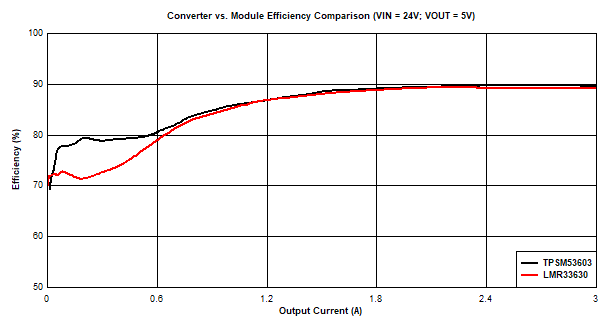 |
|---|
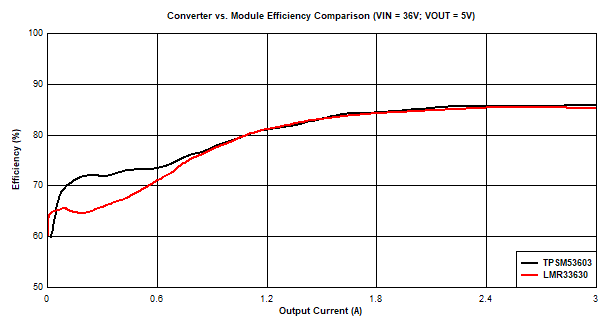 |
Efficiency Comparison of Converter (LMR23630) vs. Power Module (LMZM33603)
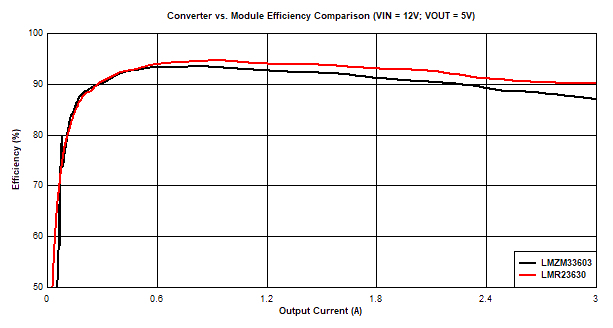 |
|---|
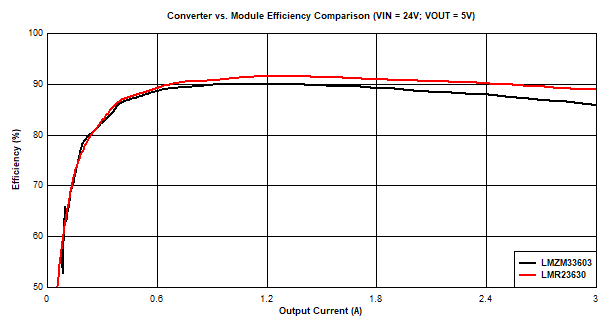 |
Efficiency Comparison of Converter (LM5165) vs. Power Module (TPSM265R1)
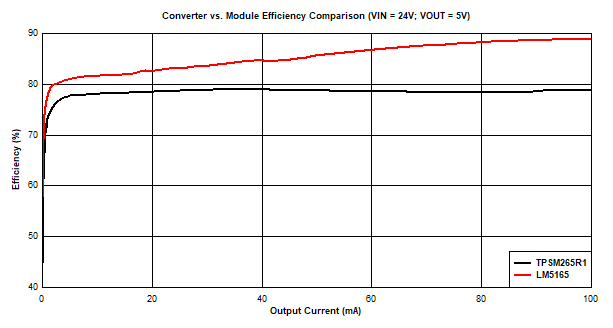 |
|---|
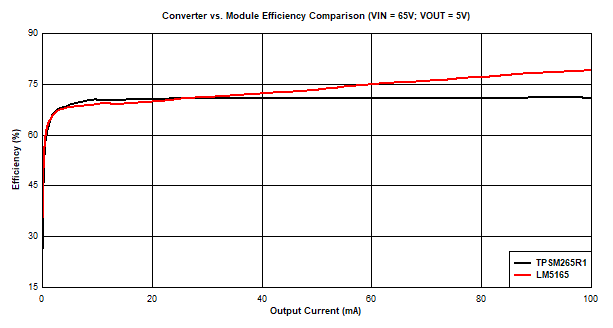 |
The power module has an internal inductor that is selected to account for stability and full current loading across the output voltage range following datasheet specification. Though it simplifies the power design and eliminates the need for customers to select a power inductor, when compared to a converter, generally the power module will have a less optimized design. In some cases, like the TPSM53604 module, the power module can have similar efficiency performance as the converter. Often the power module is tailored for typical output voltage rails.
PCB Solution Size Comparison
Component selection for both converter and power module PCB solution was selected based on the datasheet recommendation and EVM bill-of-material.
| LMR33630 PCB Solution Size | PCB Overlay Comparison | TPSM53603 PCB Solution Size |
|---|---|---|
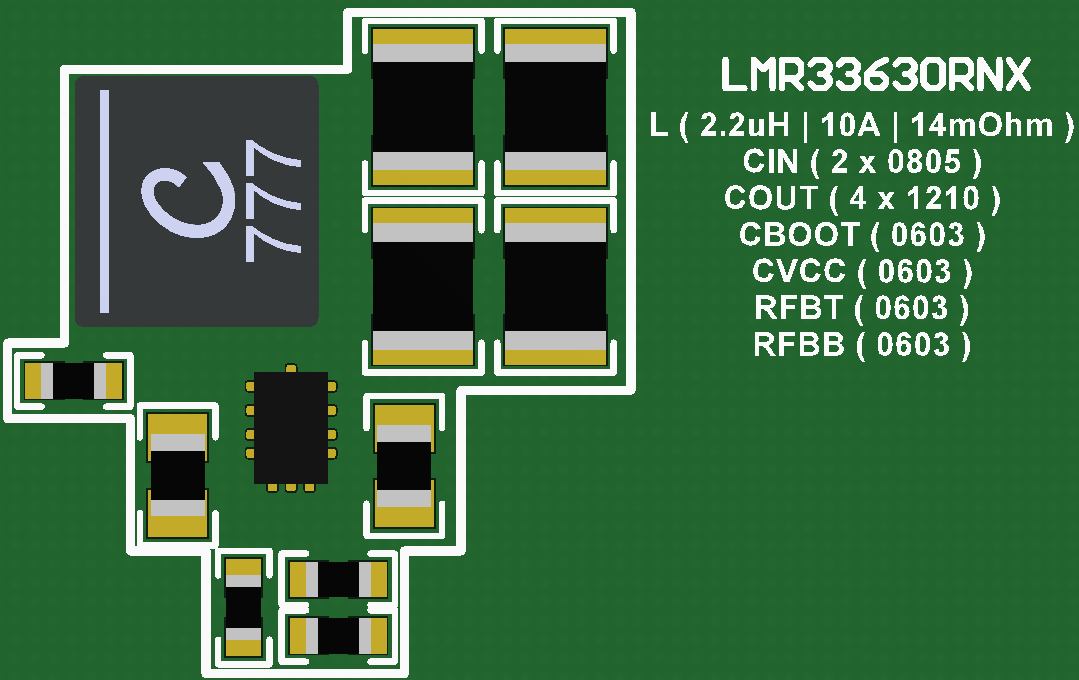 |
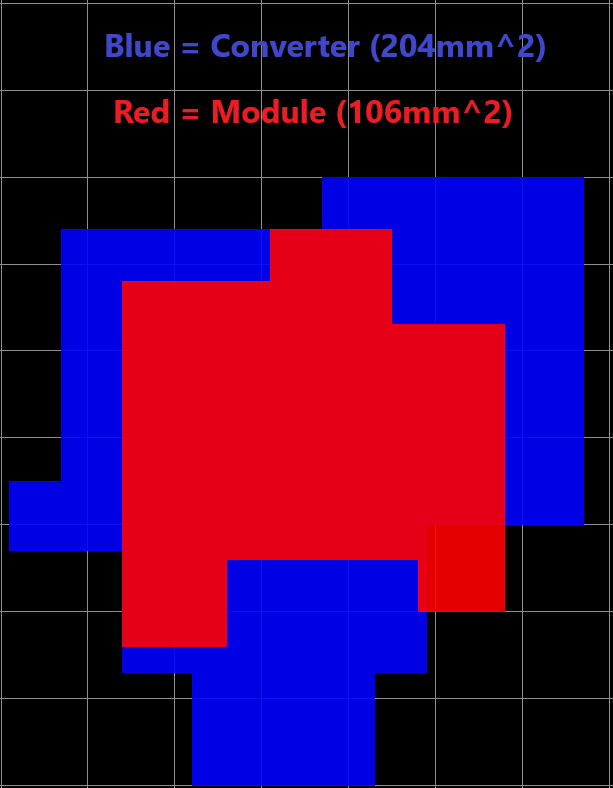 |
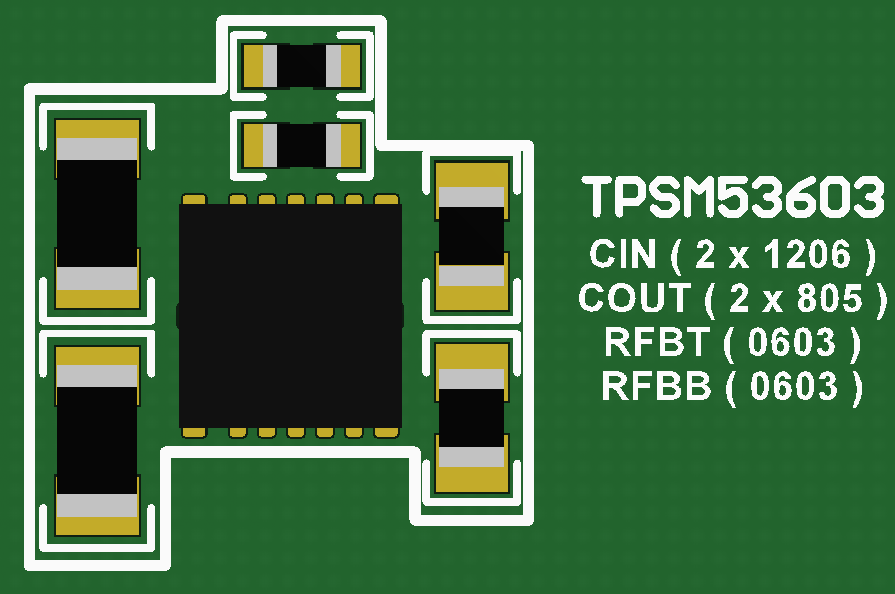 |
The total solution size of the LMR33630 converter circuit was measured to be roughly 204 mm2 compared to 106 mm2 of the TPSM53603 module circuit.
| LMR23630 PCB Solution Size | PCB Overlay Comparison | LMZM33603 PCB Solution Size |
|---|---|---|
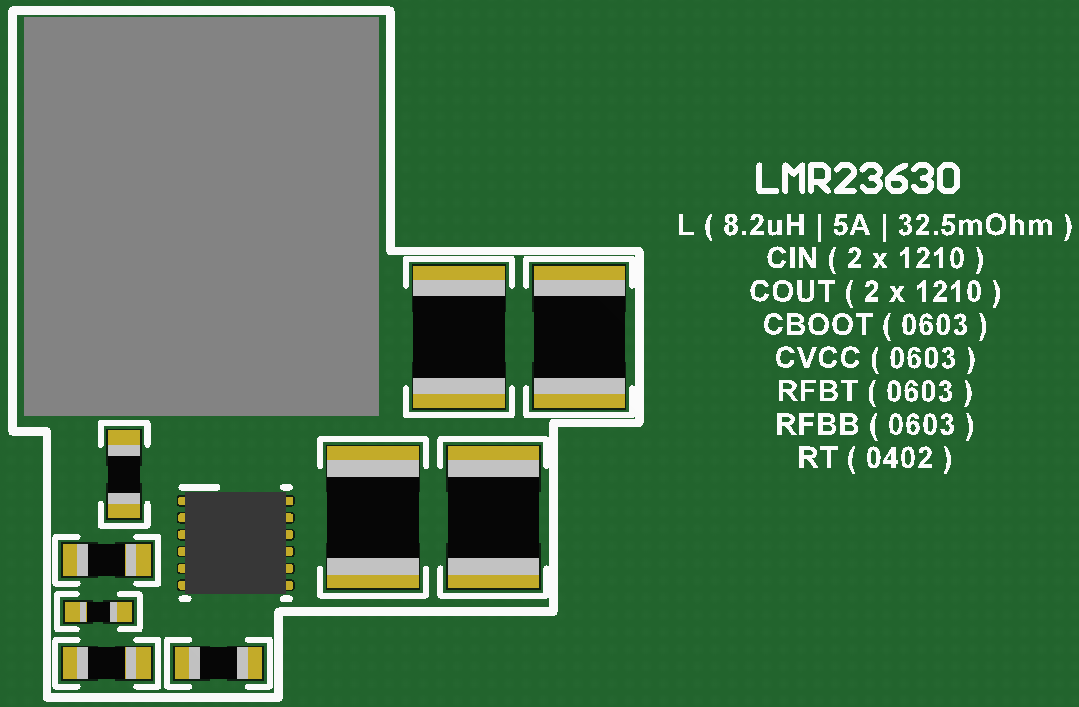 |
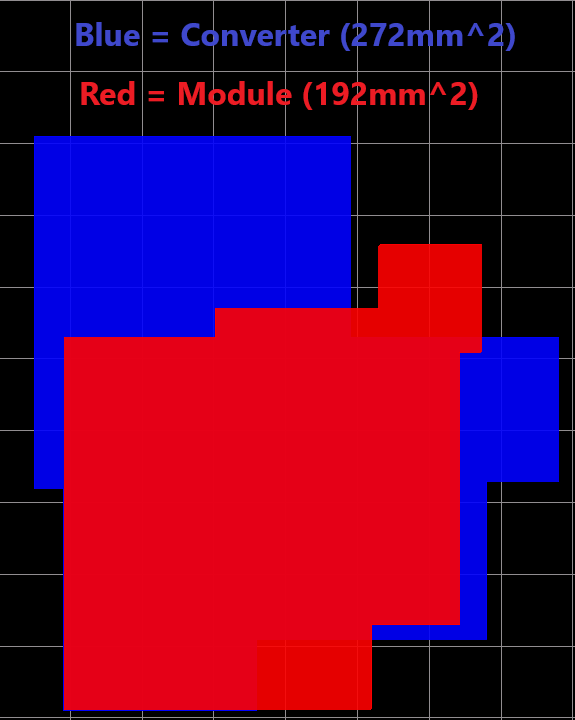 |
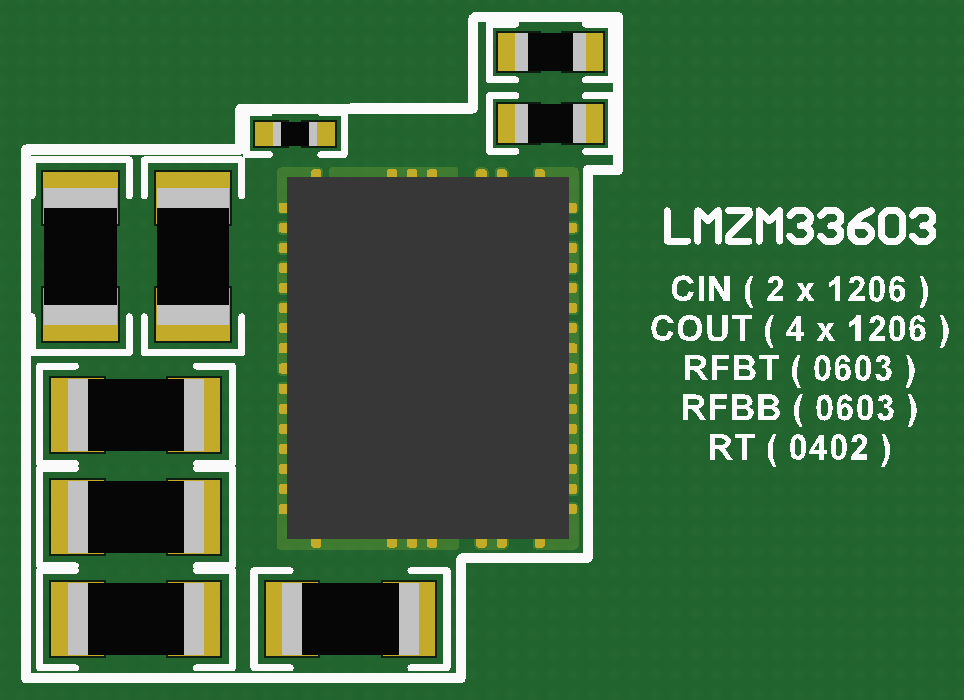 |
The total solution size of the LMR23630 converter circuit was measured to be roughly 272 mm2 compared to 192 mm2 of the LMZM33603 module circuit.
| LMR5165 PCB Solution Size | PCB Overlay Comparison | TPSM265R1 PCB Solution Size |
|---|---|---|
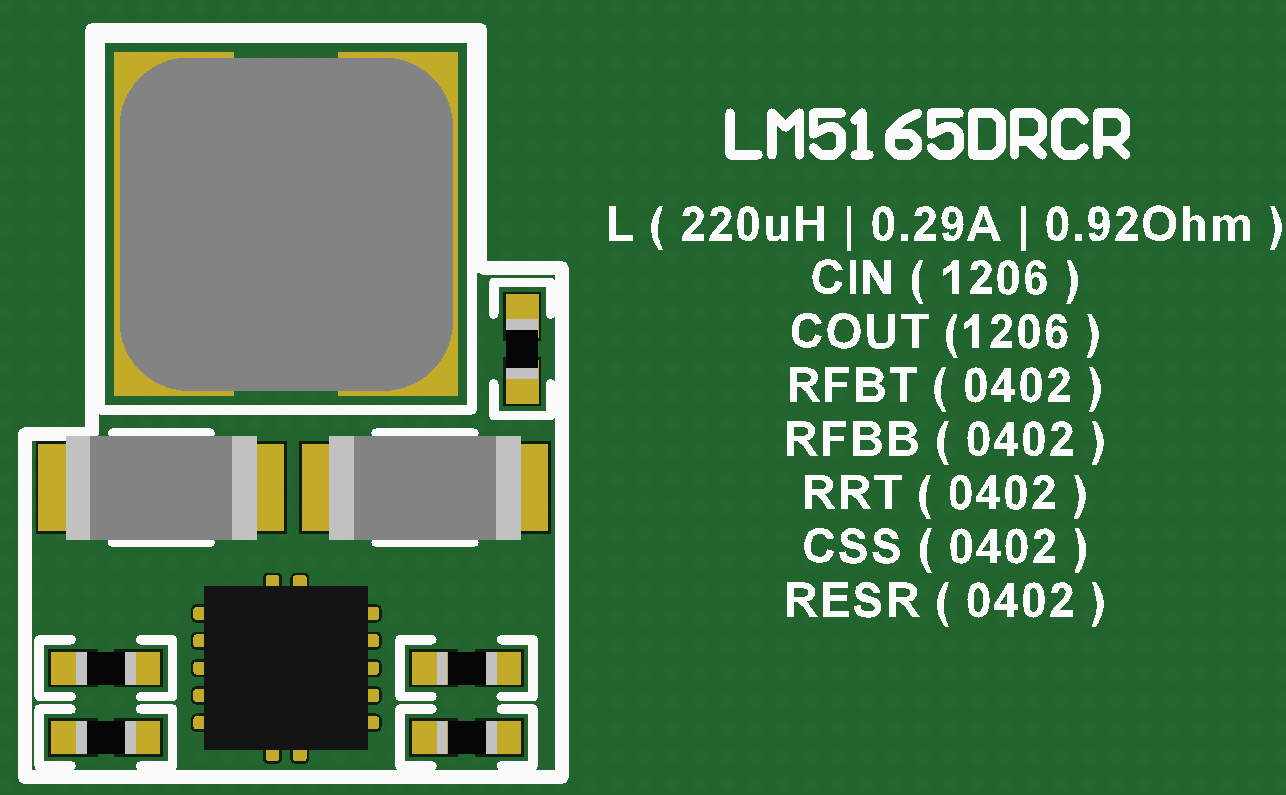 |
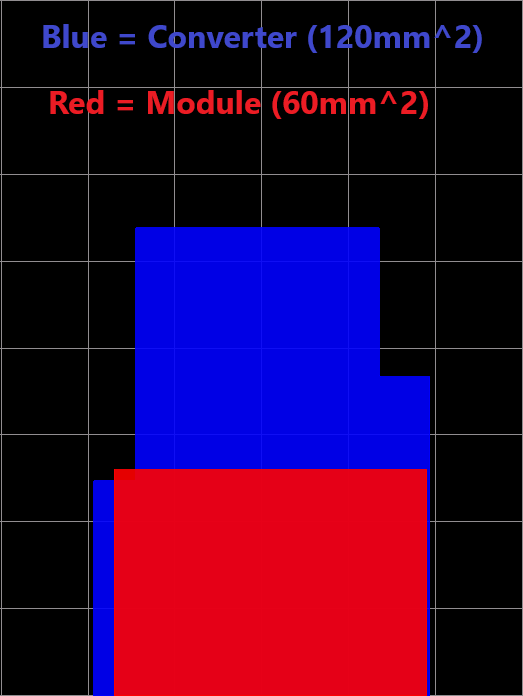 |
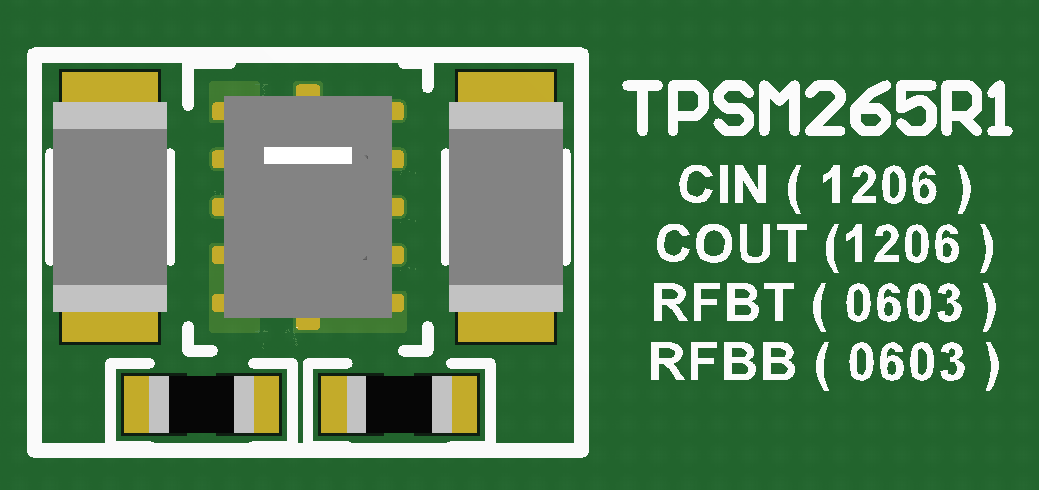 |
The total solution size of the LMR5165 converter circuit was measured to be roughly 120 mm2 compared to 60 mm2 of the TPSM265R1 module circuit.
In most cases, using the power module will provide a smaller solution size compared to the converter. This is especially true for power modules that use 3D packaging where the inductor is over the integrated switching converter and passive components. In this package technology, the majority of the solution size is attributed to the size of the inductor. Power modules that implement side-by-side construction technology will have the inductor designed next to the integrated switching converter. Depending on the required output capacitance to keep the converter stable, power modules with side-by-side construction technology can either be smaller or close to the same solution size as the converter alternative.
3 Considerations When Using Converters and Power Modules
Inductor Selection
Inductor selection is one of the most important aspect of the DC/DC converter design. When using a converter, power designers need to characterize and select the appropriate inductor while taking into account the following:
- Inductance value (impacts size, ripple, transient response, peak current, and efficiency)
- Winding resistance (impacts size, dropout, and efficiency)
- Core material (impacts size and core power losses)
- Saturation current (impacts size, peak current, and overload protection)
- Shielding (impacts EMI performance)
While the converter solution requires careful design of the inductor, the power module simplifies and reduces the design process by integrating the inductor. Power modules sacrifice design flexibility for simplicity which enables designers to "drop-in" the device into the design without being involved with the control architecture. Designers can focus more on rapid prototyping and shorten the design cycle to meet project timeline demands.
Vetting and Component Level Qualification of BOM Selection
Since inductors are one of the most important aspect of DC/DC converter design, vetting and qualifying these inductors for the design application is imperative to create a quality solution. Though the converters are qualified per Texas Instrument's standards, it is up to the customer to qualify and keep stock inventory of the externally sourced inductor. Power modules are designed to be a complete solution that is "plug and play". This simplifies the system level qualification process on the customer end. Power module designers take into account the strict reliability and quality requirements necessary to integrate the inductor and passive components when designing the part. Engineers using power modules can be assured that the device underwent a rigious internal vetting process. Beyond passive component level qualification and manufacturer testing, the vetting process of power module devices includes, but is not limited to, the following:
- Lifetime testing
- High temperature storage test
- Insulation resistance
- Inductor saturation test
- Breakdown voltage stress test
Wide Application Range and Corner Case Characterization
The simplicity of designing with a power module comes at the cost of application flexibility. The fixed inductor in the power module poses design limitations on the following: minimum and maximum switching frequency, output voltage range, and efficiency. In order to allow full current loading capability and wide input voltage range using a fixed inductor, the power module output voltage range must be derated. For example when comparing the LMR33630 with the TPSM53603, the LMR33630 provides a wide output voltage range of 1 V to 24 V while the TPSM53603 is limited to 1 V to 7 V. This is because the converter solution allows engineers to configure and select the appropriate inductor which enables a wider operating range. Another limitation with using a fixed inductor is a lowered efficiency performance when compared to the converter.
Generally at lower output voltages it is preferrable to lower the switching frequency to reduce switching losses while maintaining desired output ripple and to avoid minimum ON time violation. If the design requires higher output voltages, the switching frequency needs to be increased to lower the inductor ripple current and prevent the module from hitting current limit. In these cases, power modules with adjustable switching frequency enable designers to squeeze more efficiency and operating range out of the module. However at corner cases of high VIN and high VOUT or low VIN and low VOUT, the integrated inductor may be undersized or oversized depending on the application. With a fixed inductor and integrated converter, the power module aims to accommodate a variety of common output voltages at full loading capability. However, this comes at the cost of design flexibility and efficiency optimization which the converter solution offers to designers.
EMI Design Effort
Every buck power supply, (controller, converter and power module), will unintentionally transmit electromagnetic waves that impact and disturb surrounding circuits through the effect of electromagnetic interference (EMI).The combination of noise from the input source and the parasitic inductance to the input allows EMI to couple onto the output through the parasitic capacitance associated with the package, inductor, and PCB layout. When designing in a noise sensitive environment, EMI filtering and PCB layout is critical to attenuate the noises generated from the switching-buck power supply. The most critical path for EMI mitigtation is the current loop formed between the input, power MOSFETs and input capacitor.
In a PCB layout, the critical current loop is also known as the "high di/dt loop". Reduction of the high di/dt loop area will effectively lower the radiated noise caused by the switching action of the power MOSFETs. A quick and easy way to reduce the high di/dt loop is to place the input bypass capacitor close to the input and ground return pins of the buck power supply. Most power modules integrate both the shielded power inductor and high frequency bypass capacitor. This conscious effort by power module designers to optimize the device for EMI will help simplify and lessen the customer's EMI design burdens. Because of this, power modules can be more forgiving with layout design errors compared to converter. Refer to SLYY123 for an in-depth EMI design comparison between converter (LMR23630) and power module (LMZM33603).
Thermal Design Effort
Thermal characterization is greatly simplified in a power module since all relevant power dissipation components are integrated into the module package. This high level of component integration requires the power module team to subject the power module through extensive thermal characterization necessary to create a part that is reliable for any design. The result of this characterization is detailed in the datasheet's safe operating area curves. The curves highlight the power module's thermal capabilities at different power condtions and potential derated performance at higher output power conditions and higher ambient temperatures.
Another thermal characterization provided in the datasheet is the package thermal performance versus board area graph that is generated from testing the module package on different board sizes. Engineers designing with power modules can easily reference these practical graphs to get a rough idea of the board space given the application's maximum ambient temperature and expected power dissipation. Since power module designers do most of the "heavy lifting" by creating the part with a focus on optimized layout and thermal performance, the power module solution can greatly simplify the thermal design process and achieve faster time to market compared to the converter solution.